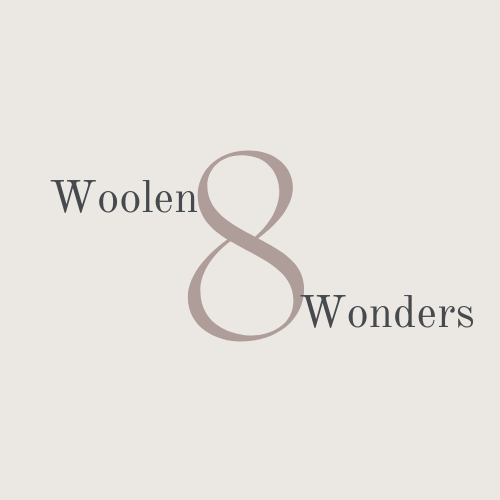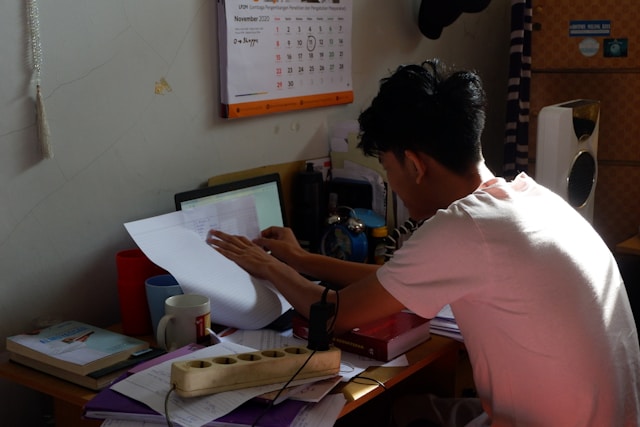Anúncios
Crowdsourced crochet installations represent a fascinating intersection of community, creativity, and craftsmanship. At their core, these projects bring together individuals from various backgrounds to contribute to a larger artistic endeavor, each adding their unique stitch to a collective tapestry. This innovative approach to art challenges traditional notions of authorship and creation, emphasizing the power of collective action in the digital age. The beauty of these installations lies not just in their visual impact but in their ability to tell a story of collaboration and interconnectedness.
The concept of crowdsourcing in the arts has gained momentum with the advent of social media and digital platforms, allowing for wider participation and engagement beyond geographical limitations. Crochet, with its simple technique yet potential for complexity, has emerged as a popular medium for such collaborative art projects. These installations often take shape over months or even years, with hundreds or thousands of contributors from around the globe.
Crowdsourced crochet installations also serve as a canvas for raising awareness about various social and environmental issues. From coral reef conservation efforts to messages about community and inclusivity, these artworks harness the visual and tactile nature of crochet to provoke thought and inspire action. They demonstrate how traditional crafts can be revitalized and repurposed in contemporary contexts, blending age-old techniques with modern themes and concerns. Moreover, these installations challenge the conventional boundaries between the creator and the audience. Participants, who often range from novice crafters to experienced artists, contribute pieces that are integrated into a cohesive whole, curated by the project’s organizers. This process democratizes art production, making it accessible and participatory, and underscores the value of each individual’s contribution to the grand vision.
The History and Evolution of Crowdsourced Crochet Installations
The journey of crochet from a domestic pastime to a medium for large-scale artistic expression is a testament to its versatility and adaptability. Originally developed as a method of creating intricate lace patterns for clothing and household items, crochet has evolved to become a powerful tool for artistic and social expression. The pivotal moment in this evolution was the recognition of crochet’s potential to go beyond two-dimensional surfaces, spatial and sculptural possibilities.
The concept of crowdsourcing art projects, particularly using crochet, gained prominence in the early 21st century. Artists and community leaders saw the potential for crochet to bring people together, creating shared experiences and narratives through the act of making. One of the earliest and most influential of these projects is the Crochet Coral Reef, initiated by the Wertheim sisters. This project not only showcased the aesthetic possibilities of crochet but also highlighted its capacity to model complex natural forms and systems, bridging art, science, and environmental activism.
Anúncios
As the idea of crowdsourced crochet installations grew, so did the diversity of their themes and objectives. Projects have ranged from vibrant playgrounds and immersive environments to poignant commentaries on social issues. Each installation, with its unique blend of colors, textures, and forms, serves as a fingerprint of the community that created it, reflecting the collective creativity, concerns, and aspirations of its contributors. The evolution of these installations is also marked by the increasing use of digital tools and platforms to organize, design, and execute projects. Social media, websites, and online forums have become vital in spreading the word, gathering contributions, and fostering a sense of community among participants scattered across the globe. This digital dimension has expanded the reach and impact of crochet installations, making them truly global phenomena.
Understanding the Impact of Crowdsourced Crochet Installations
The impact of crowdsourced crochet installations extends far beyond the visual and aesthetic. These projects embody a powerful form of social practice art, where the process of creation is as important as the final product. They forge connections among individuals, foster a sense of community and belonging, and provide a platform for collective storytelling and expression. For many participants, the act of contributing to a larger artwork serves as a meaningful gesture of solidarity, activism, or commemoration.
Environmental consciousness is another significant aspect of many crowdsourced crochet projects. By using recycled materials or focusing on themes such as coral reef degradation, these installations serve as compelling advocates for sustainability and conservation. They offer a unique blend of education and engagement, inviting viewers to consider their relationship with the natural world in a tactile and immersive way. The educational value of these installations cannot be overstated. They introduce participants to the basic principles of mathematics, geometry, and environmental science through the act of crochet. For many, this hands-on experience demystifies complex concepts and sparks an interest in further research. Moreover, the inclusive nature of these projects ensures that educational opportunities are accessible to a wide audience, regardless of age, background, or skill level.
Crowdsourced crochet installations also challenge and expand the boundaries of public art. By situating these works in community centers, public parks, museums, and galleries, they invite broad public interaction and participation. These installations transform public spaces into forums for dialogue, reflection, and connection, redefining the role of art in society and its capacity to engage and inspire diverse communities. Crowdsourced crochet installations stand at the confluence of art, community, and activism. They exemplify how traditional crafts can be transformed into dynamic platforms for collaboration, expression, and social change. Through the collective efforts of individuals around the world, these installations weave together stories of creativity, resilience, and hope. As we look to the future, the potential for crowdsourced crochet installations continues to expand. They promise new opportunities for engagement and innovation, bridging gaps between generations, cultures, and disciplines. In a world that often emphasizes division, these projects offer a vivid reminder of what we can achieve together, stitch by stitch.
The Process and Techniques Behind Crowdsourced Crochet Art
Crowdsourced crochet art, a fascinating and inclusive form of contemporary installation, involves the collective effort of numerous individuals from diverse backgrounds who contribute to large-scale artistic projects. This artistic endeavor typically starts with a core idea conceptualized by an artist or a group, which is then opened up to the public for participation. Contributors from around the world contribute pieces that are eventually assembled into a single, cohesive installation. The process begins with the distribution of guidelines which detail the types, colors, and sizes of yarns to be used, ensuring consistency across the disparate pieces. Participants might be asked to create specific shapes, patterns, or even abstract forms, which are then sent to a central location for assembly.
The assembly of these pieces is a meticulous and careful process, often carried out by volunteers or community groups under the guidance of the initiating artist. This stage is critical as it involves not only the physical joining of crochet pieces but also the aesthetic integration of varying textures and hues, which must harmoniously blend to bring the artist’s vision to life. Once completed, these installations can span considerable spaces—draped over buildings, stretched across parks, or hung inside large public spaces like libraries and museums, transforming familiar environments into vibrant, textural landscapes.
The appeal of crowdsourced crochet art lies in its community-centric approach. It breaks down the conventional barriers of art creation, allowing people without formal artistic training to contribute creatively and meaningfully. This method fosters a sense of community and shared purpose, as contributors see their individual work become part of a larger tapestry that is both visually and symbolically rich. Furthermore, the temporal nature of these installations often leaves a lasting impression on both the contributors and spectators, underscoring the transient yet impactful nature of collaborative art.
Such projects also serve as an educational tool, introducing the public to the skills and patience required in crochet, and more broadly, in textile arts. They highlight the meticulous craftsmanship involved in crochet, drawing attention to what can be achieved with simple tools and yarn. Moreover, these installations often travel, being displayed in various locations, which helps in spreading awareness and appreciation for crochet as a form of artistic expression far beyond its traditional home-bound connotations.
Ultimately, the process and techniques of crowdsourced crochet art exemplify a unique blend of individual creativity and collective collaboration. The installations they create are not only a testament to the artistic vision but also a celebration of communal participation and cultural diversity. Through these sprawling yarn creations, viewers are offered a tangible, intricate look at the power of collective artistic endeavors, reminding us that art can be both a personal expression and a unifying force in society.
The Role of Digital Platforms in Enhancing Crowdsourced Crochet Projects
In the realm of crowdsourced crochet installations, digital platforms have emerged as pivotal tools that enhance collaboration and streamline the process of bringing together diverse contributions. These platforms serve not only as repositories and forums where information, patterns, and tutorials can be shared, but also as vibrant communities where artists and contributors connect, share ideas, and foster relationships. A typical project might start with an artist or organizer posting a call for contributions on a dedicated website or social media group, complete with detailed instructions about the project’s theme, the types of yarn to use, and the deadlines for submission.
Contributors, ranging from seasoned crochet enthusiasts to novices eager to learn and participate, can download patterns, watch instructional videos, and interact with others to get feedback or resolve difficulties they encounter while creating their pieces. These digital tools also allow for a continuous update process, where contributors can see parts of the installation taking shape as others post photos of their completed work. This visual progression not only motivates participants but also builds anticipation and excitement around the final assembly of the project.
Moreover, organizers use these digital platforms to coordinate the logistics of collecting the crocheted pieces, arranging for physical spaces to assemble the installations, and planning public exhibitions. By leveraging technology, they can manage large volumes of submissions efficiently, ensure consistency in the artistic elements, and maintain ongoing communication with a large network of contributors scattered across the globe. The digital footprint of these projects also includes the use of hashtags and social media campaigns to attract viewers to the installations, thus broadening the reach and impact of the artwork beyond its physical location.
Digital platforms not only facilitate the operational aspects of crowdsourced crochet projects but also play a crucial role in documenting and archiving these temporary installations. Through online galleries and virtual tours, those unable to visit the physical locations can experience the art, delve into the creation process, and understand the community stories behind each piece. This digital documentation creates a lasting legacy for transient artworks, preserving their beauty and the collective effort involved in their creation for future inspiration.
By bridging geographical distances and bringing together a tapestry of voices and hands, digital platforms have thus become indispensable in the world of crowdsourced crochet art. They amplify the communal spirit, enhance the visibility of textile arts, and ensure that these collaborative creations leave an enduring impact both in the physical and digital worlds.
See More At: woolen8wonders.com



